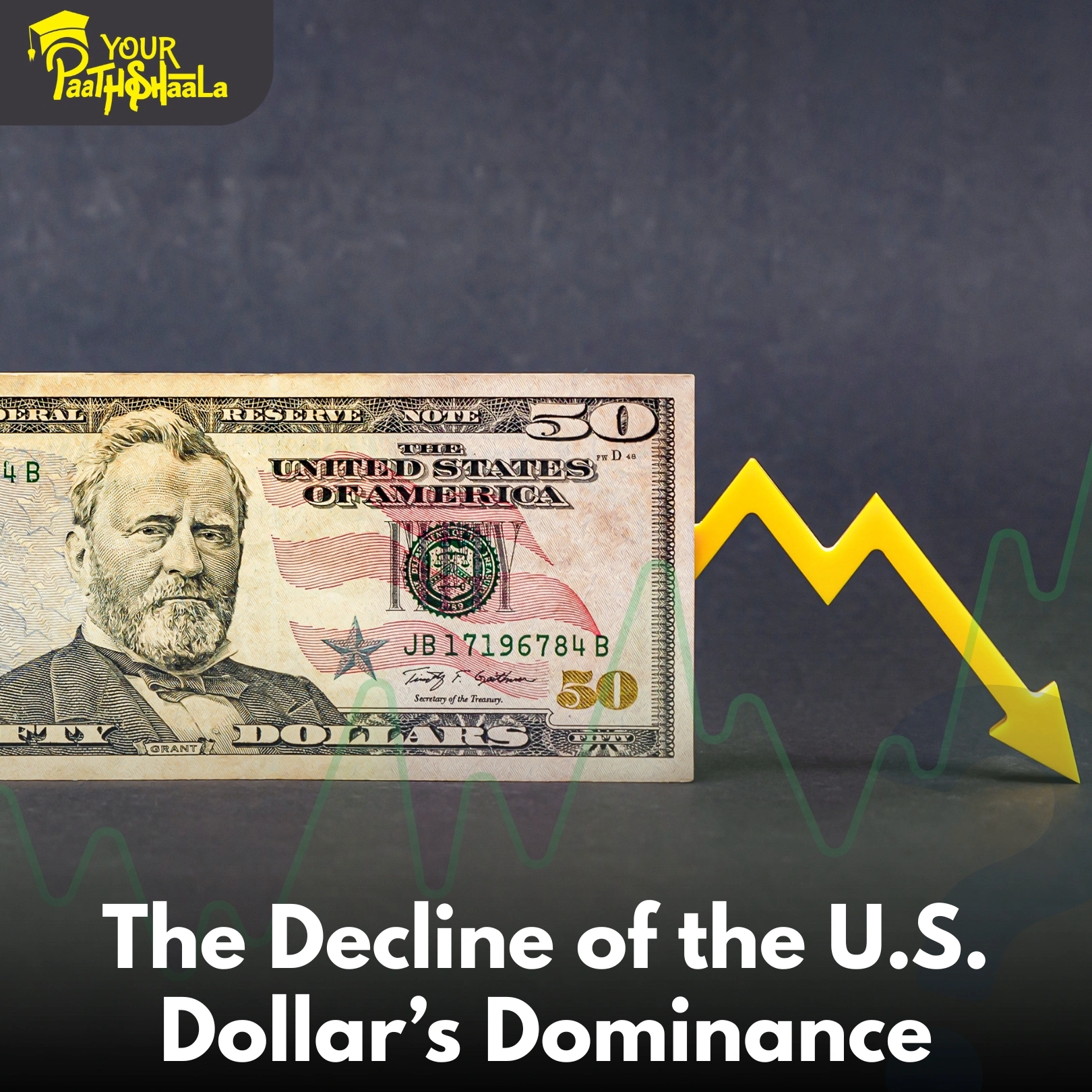The Decline of the U.S. Dollar’s Dominance: How Global Trade Is Shifting and What It Means for Investors
For nearly eight decades, the U.S. dollar has been the undisputed king of global finance. It has served as the world’s primary reserve currency, the preferred medium for international trade, and a symbol of American economic power. But in recent years, a historic shift has begun. More countries are exploring alternatives, reducing their reliance on the dollar, and changing the dynamics of global trade and investment. What’s driving the decline of the U.S. dollar’s dominance? How does this trend impact foreign investment and global power structures? And what should investors do in response?
In this comprehensive, SEO-friendly guide, we’ll explore the forces behind the dollar’s decline, examine the rise of alternative currencies, and discuss the implications for investors, businesses, and the global economy.
The U.S. Dollar: From Bretton Woods to Global Reserve
A Brief History of Dollar Dominance
After World War II, the 1944 Bretton Woods Agreement established the U.S. dollar as the world’s reserve currency, backed by gold. Even after the gold standard ended in 1971, the dollar remained central to international finance, thanks to the size and stability of the U.S. economy, deep capital markets, and the trust in American institutions.
Why the Dollar Became So Dominant
Oil and Commodity Pricing: Most global commodities, especially oil, are priced and traded in dollars (“petrodollars”).
Safe-Haven Status: In times of crisis, investors flock to the dollar and U.S. Treasury bonds.
Reserve Holdings: Central banks worldwide hold the majority of their reserves in dollars.
International Trade: Over 80% of global trade is invoiced in dollars, even between countries outside the U.S.
Why Is the Dollar’s Dominance Declining?
1. Geopolitical Shifts and Sanctions
The decline of the U.S. dollar’s dominance is caused by increasing use of U.S. financial sanctions as a tool of foreign policy has made some countries wary of over-reliance on the dollar. Russia, China, Iran, and others have sought alternatives to avoid the risk of being cut off from the dollar-based financial system.
2. The Rise of China and Other Economies
China’s economic rise has been one of the most significant stories of the 21st century. As China becomes a larger player in global trade and finance, its currency—the yuan (renminbi)—is gaining traction as a global alternative.
3. Diversification by Central Banks
Central banks are gradually reducing their dollar holdings and increasing reserves in other currencies such as the euro, yuan, and gold. According to the IMF, the dollar’s share of global reserves has fallen from over 70% in 2000 to below 59% in 2024.
4. Growth of Regional Trade Blocs
Trade agreements and regional blocs (like the European Union, ASEAN, and the African Continental Free Trade Area) are encouraging trade in local currencies, reducing the need for dollar transactions.
5. Technological Innovations
The rise of digital currencies, blockchain-based payment systems, and central bank digital currencies (CBDCs) is making it easier for countries to bypass the dollar in cross-border transactions and it is also a cause for The decline of the U.S. dollar’s dominance.
How Are Countries Reducing Dollar Dependency?
1. Bilateral Trade Agreements
Countries are increasingly signing agreements to settle trade in their own currencies. For example:
China and Russia conduct much of their trade in yuan and rubles.
India and UAE have agreed to use rupees and dirhams for oil and other trade.
Brazil and Argentina have discussed a common currency for South American trade.
2. Alternative Payment Systems
CIPS (China’s Cross-Border Interbank Payment System): Competes with SWIFT and facilitates yuan-denominated transactions.
INSTEX (Instrument in Support of Trade Exchanges): Created by Europe to bypass U.S. sanctions on Iran.
3. Gold and Digital Assets
Some central banks are increasing gold reserves and exploring digital currencies as alternatives to dollar reserves.
The Impact on Global Trade
1. Shift in Trade Flows
As more countries settle trade in alternative currencies, the dollar’s role as the default medium of exchange is eroding. This trend is especially pronounced in energy, technology, and commodity markets.
2. Increased Currency Volatility
With more currencies in play, exchange rate volatility may rise. Businesses and investors must manage new risks related to currency fluctuations.
3. Changing Power Dynamics
The U.S. loses some leverage as its currency becomes less central to global trade. This could impact America’s ability to impose effective sanctions and influence international finance.
Implications for Foreign Investment
1. Diversification of Reserve Assets
As central banks diversify away from the dollar, demand for U.S. Treasury bonds may decrease, potentially leading to higher U.S. interest rates and lower bond prices.
2. Shifting Investment Flows
With more countries trading in local currencies, capital may flow more freely to emerging markets, boosting investment in Asia, Latin America, and Africa.
3. New Opportunities and Risks
Investors must adapt to a world where the dollar is no longer the only game in town. This means:
Greater need for currency risk management.
More opportunities in non-dollar assets (e.g., euro, yuan, gold, digital currencies).
Potential for higher returns, but also higher volatility.
The Rise of Alternative Currencies
1. The Chinese Yuan (Renminbi)
Internationalization: The yuan is now part of the IMF’s Special Drawing Rights (SDR) basket and is increasingly used in global trade.
Belt and Road Initiative: China’s massive infrastructure investments are often financed and settled in yuan.
Digital Yuan: China is a leader in central bank digital currencies, which could further boost the yuan’s global role.
2. The Euro
The euro remains the world’s second most important currency, widely used in Europe, Africa, and parts of Asia.
The European Central Bank is exploring a digital euro to enhance its global appeal.
3. Gold and Cryptocurrencies
Gold is making a comeback as a reserve asset, especially among emerging market central banks.
Cryptocurrencies like Bitcoin and stablecoins are being used for cross-border payments, though they remain volatile and face regulatory hurdles.
Challenges to a Post-Dollar World
1. Network Effects
The dollar’s dominance is reinforced by its widespread use. Changing the system is difficult because so many contracts, loans, and reserves are already dollar-based.
2. Trust and Stability
The U.S. financial system is still seen as more stable and transparent than most alternatives. The eurozone’s debt crises and China’s capital controls have limited the appeal of their currencies.
3. Fragmentation Risks
A multipolar currency world could lead to fragmentation, making global trade and finance more complex and costly.
What Should Investors Do?
1. Diversify Currency Exposure
Don’t keep all your assets in dollars. Consider exposure to other major currencies, gold, and digital assets.
2. Monitor Geopolitical Trends
Stay informed about global trade agreements, sanctions, and central bank policies that could impact currency markets.
3. Hedge Currency Risk
Use hedging strategies (like currency ETFs or options) to protect your portfolio from adverse currency moves.
4. Explore Emerging Markets
As capital flows shift, emerging markets may offer new growth opportunities—but also higher risks. Do your research and diversify.
5. Stay Flexible and Informed
The global financial system is in flux. Staying flexible, informed, and diversified will help you navigate the changes ahead.
Frequently Asked Questions
Q: Is the U.S. dollar about to collapse?
A: No. While its dominance is declining, the dollar remains the world’s most important currency. The shift is gradual, not sudden.
Q: Will another currency replace the dollar?
A: No single currency is likely to replace the dollar soon. Instead, we’re moving toward a more multipolar system with several major currencies.
Q: How does this affect regular investors?
A: Expect more currency volatility and new opportunities in non-dollar assets. Diversification and risk management are key.
Q: What about cryptocurrencies?
A: They are gaining traction for cross-border payments, but remain volatile and face regulatory uncertainty.
Conclusion: The New Era of Global Finance
The decline of the U.S. dollar’s dominance is one of the most important shifts in global finance today. Driven by geopolitical changes, technological innovation, and the rise of new economic powers, this trend is reshaping trade flows, investment patterns, and the balance of global power.
Key Takeaways:
The dollar’s role as the world’s reserve currency is gradually declining.
Alternative currencies like the yuan, euro, gold, and digital assets are gaining ground.
Investors must adapt to new risks and opportunities by diversifying and staying informed.
As the world moves toward a more multipolar currency system, those who understand and prepare for these changes will be best positioned to thrive in the new era of global finance.
Want to learn more about global finance and currency trends? Visit YourPaathshaala near 🏥 Anjali Children Hospital, Tagore Nagar, Mathpurena, Raipur (PIN: 492001, Chhattisgarh). Click the Call Now to contact us and get expert guidance on navigating the evolving world of money and investment!







